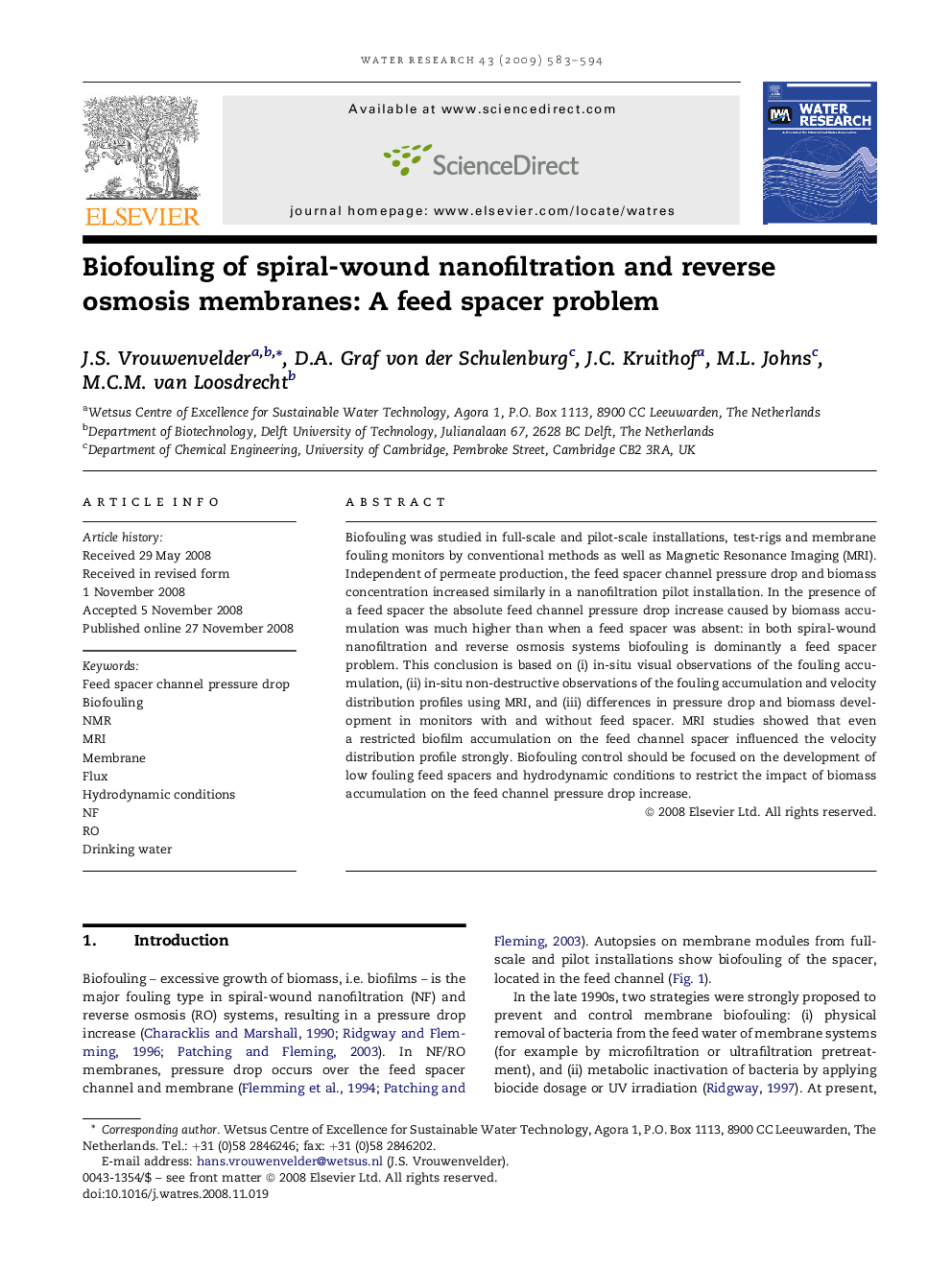| Article ID | Journal | Published Year | Pages | File Type |
|---|---|---|---|---|
| 4485274 | Water Research | 2009 | 12 Pages |
Biofouling was studied in full-scale and pilot-scale installations, test-rigs and membrane fouling monitors by conventional methods as well as Magnetic Resonance Imaging (MRI). Independent of permeate production, the feed spacer channel pressure drop and biomass concentration increased similarly in a nanofiltration pilot installation. In the presence of a feed spacer the absolute feed channel pressure drop increase caused by biomass accumulation was much higher than when a feed spacer was absent: in both spiral-wound nanofiltration and reverse osmosis systems biofouling is dominantly a feed spacer problem. This conclusion is based on (i) in-situ visual observations of the fouling accumulation, (ii) in-situ non-destructive observations of the fouling accumulation and velocity distribution profiles using MRI, and (iii) differences in pressure drop and biomass development in monitors with and without feed spacer. MRI studies showed that even a restricted biofilm accumulation on the feed channel spacer influenced the velocity distribution profile strongly. Biofouling control should be focused on the development of low fouling feed spacers and hydrodynamic conditions to restrict the impact of biomass accumulation on the feed channel pressure drop increase.
